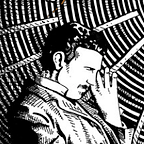Jasmine Sawers talks about growing up with fairy tales and the stark differences between American and Thai folklore.
My foundational knowledge of Western fairy tales comes from the 1987 edition of The Random House Book of Fairy Tales adapted by Amy Ehrlich, given to me as a gift by family friends for my second birthday in Cambridge, Massachusetts, and still in my possession today as an adult in St. Louis. These stories are beautifully written — a feat for children’s literature, which can appear deceptively simple on the outside — and, unlike many written versions of the same tales, convey motivation and internal logic without devolving into exposition. In their way, they provide searing insight into the cultural values of Western European and American society, bringing into sharp relief such insidious lessons as “beauty is goodness and ugliness is moral turpitude,” “queer happiness is impossible,” and, my favorite, “women are evil.” While this book would not be my only fairy tale touchstone, it is by far the most important to me.
My experience of Thai fairy tales was different. My Thai mother doesn’t seem to know them well herself — no one took the time when she was young, and thus she had nothing to pass to her children. My American but Thai-speaking father was an adult when he moved to Thailand, and thus no one told him the stories either.
When I was ten, I spent the summer in Thailand and found an English-language book called Folktales from the Land of Smiles by Andrew Coombs, a collection of legends from all around the country. This would be my only path to learning the stories of the other half of my heritage until recently, when English versions of Thai tales started to pop up online.
Like the Western tales I loved so well, these stories from the Thai oral tradition are regional — someone in the north might tell a different version than someone in central or southern Thailand. Some are very famous, like Nang Nak, with countless movies made of them, while others are more obscure. Some fit into a broader Southeast Asian tradition, like the yak stories, while others represent cross-Asian phenomena, like hungry ghosts. The stories may even change from family to family.
The pitfall of Folktales from the Land of Smiles, however, is in the translation: not necessarily from one language to the other but from one culture to the other. Coombs is not a Thai author, nor one who takes particular care in his language, unlike Ehrlich. The results are grammatically dizzying tales in which Coombs takes great pains to explain Thai culture to an English-language audience while not particularly understanding it himself. It is a very Western take on tales that are essentially Eastern — the difference between individualism and collectivism, a culturally Christian outlook versus a Buddhist one, a misunderstanding of the cycle of karma. While I loved Folktales from the Land of Smiles as a child, its shortcomings are disappointing to me as an adult reader.
The filter of Coombs’ interpretation made the Thai legends feel less Thai to me. On top of that, the fact that I was brown in my 98% white hometown of Hamburg, New York, meant I could find myself in neither these Thai stories nor the European ones. When I began to write my own fairy tales, I found I was still erasing myself. I was no blonde girl waiting for rescue, nor a lurking stereotype whose difference was twisted into villainy. How could I orient my work to my own perspective? How could I write something that would speak to my own mixed heritage, and, more broadly, to the experience of being raised in multiple cultures but fully belonging to none of them? I looked to the stories once again and found that despite how different they seemed at first glance, they shared a lot at their core: their heroes valued honor, cunning, kindness, intelligence, and, of course, fair skin. Yes, there was racism and colorism in both the Thai stories and the Western ones. Sexism. Heteronormativity. Classism. Greed. Bad parents, good parents, and the attendant filial piety regardless. Their monsters, literal and metaphorical, began to appear to me as if they had sprung from the same place: universal human failings.
That, I could work with.
Fairy tales are often the first stories that will teach us what stories can do. Fairy tales made me a writer first for their fabulism but then for their darkness. When I peered into the gaps between scenes, between reader and page, between my reality and that of any given character, it became imperative that I fill them in with my own beating heart.
Storytelling is powerful magic. Under its auspices writers become witches.
